ITECH1400 Fundamentals of Programming: Palindrome and Anagram Code
VerifiedAdded on 2022/12/26
|7
|531
|1
Homework Assignment
AI Summary
This assignment solution for ITECH1400 Fundamentals of Programming focuses on implementing palindrome checks and anagram generation using Python. The solution includes pseudocode outlining the steps for both functionalities, followed by the corresponding Python code snippets. The palindrome check reads a text file, identifies palindromes, and prints the count and the identified palindromic lines. The anagram implementation involves reading words from a file, sorting the letters of each word, and identifying anagrams. The code includes functions for reading the file, sorting characters, and finding anagrams. The assignment also provides a screenshot of the program's output, demonstrating the execution of both the palindrome and anagram functionalities.
1 out of 7
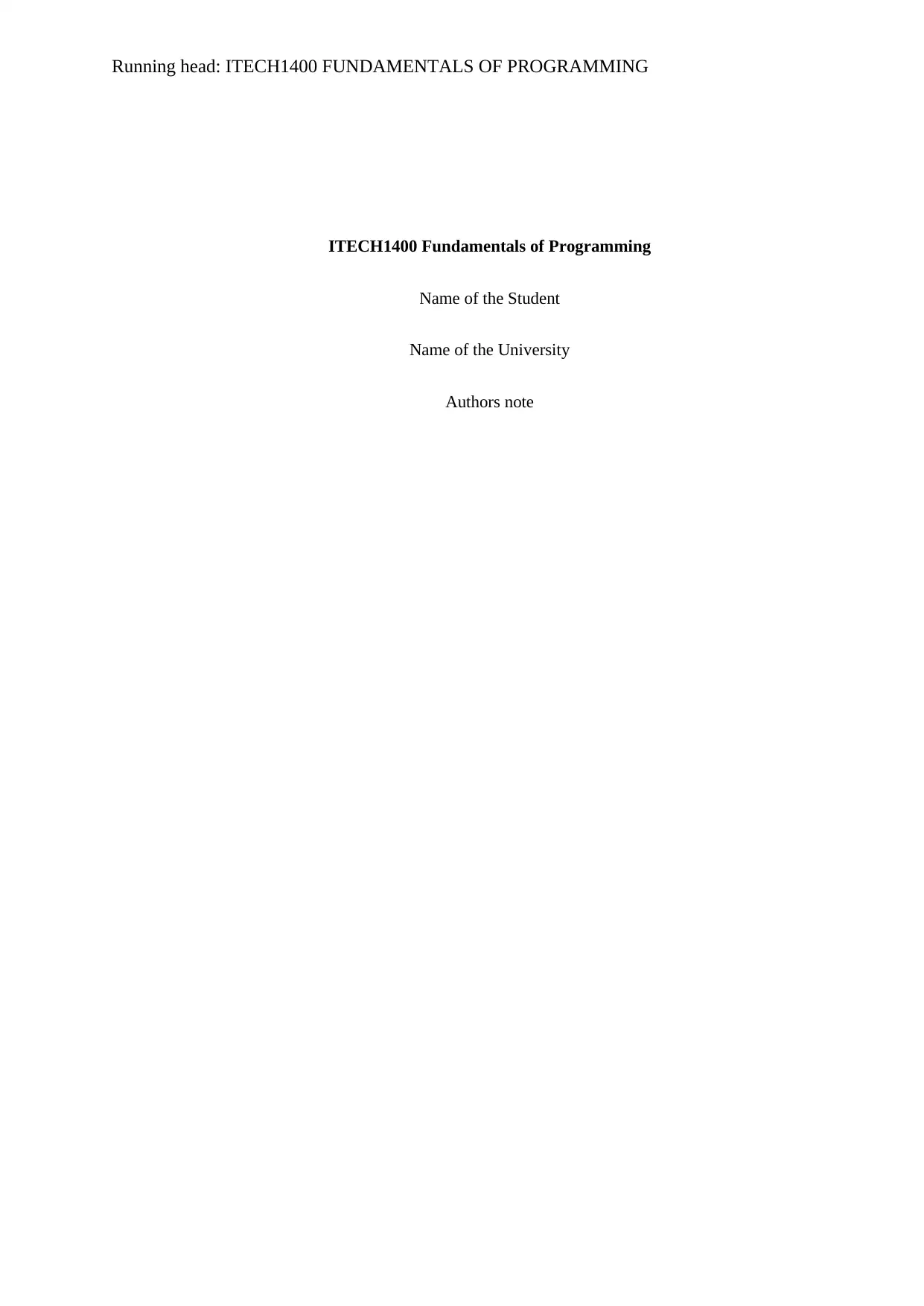
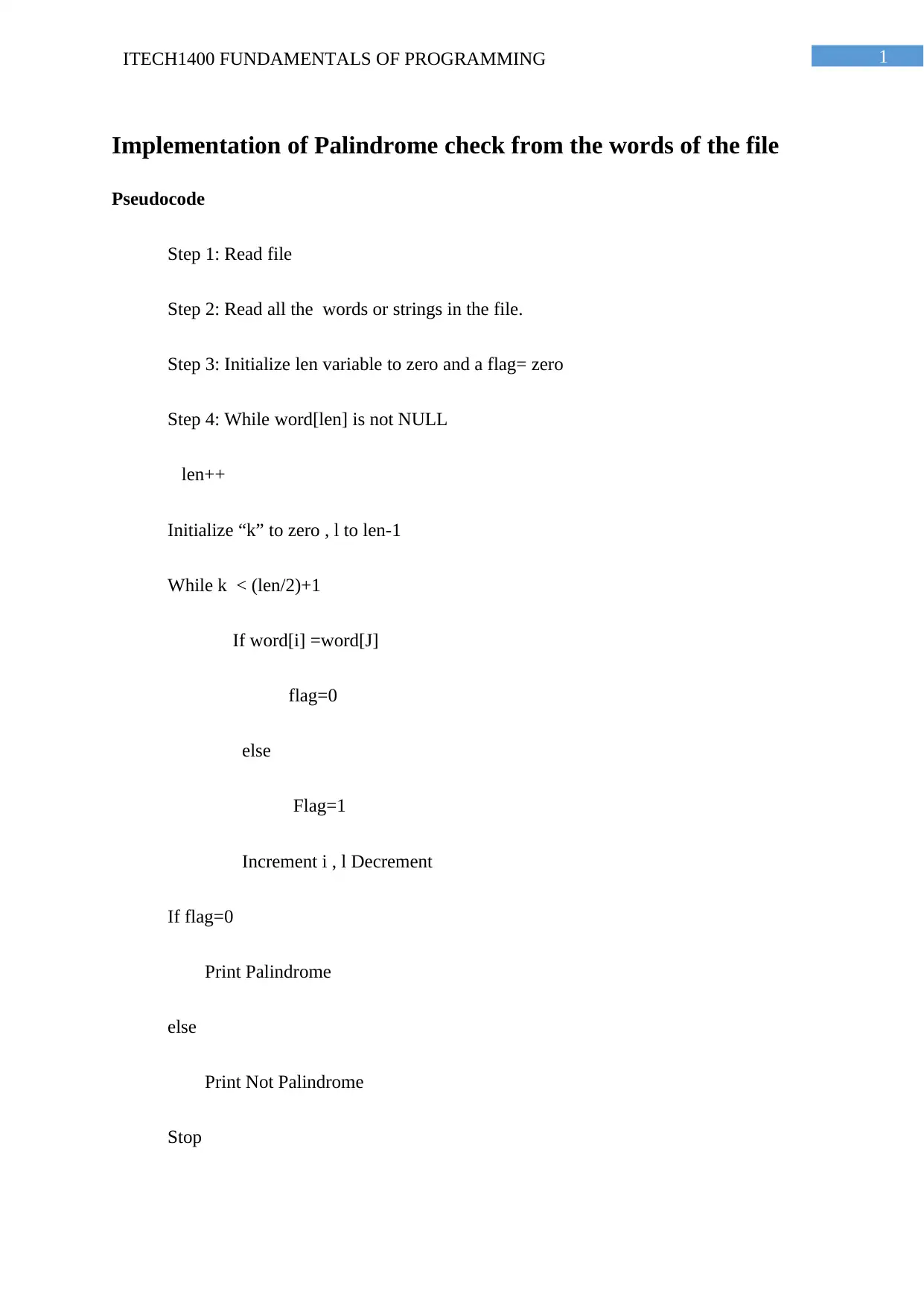
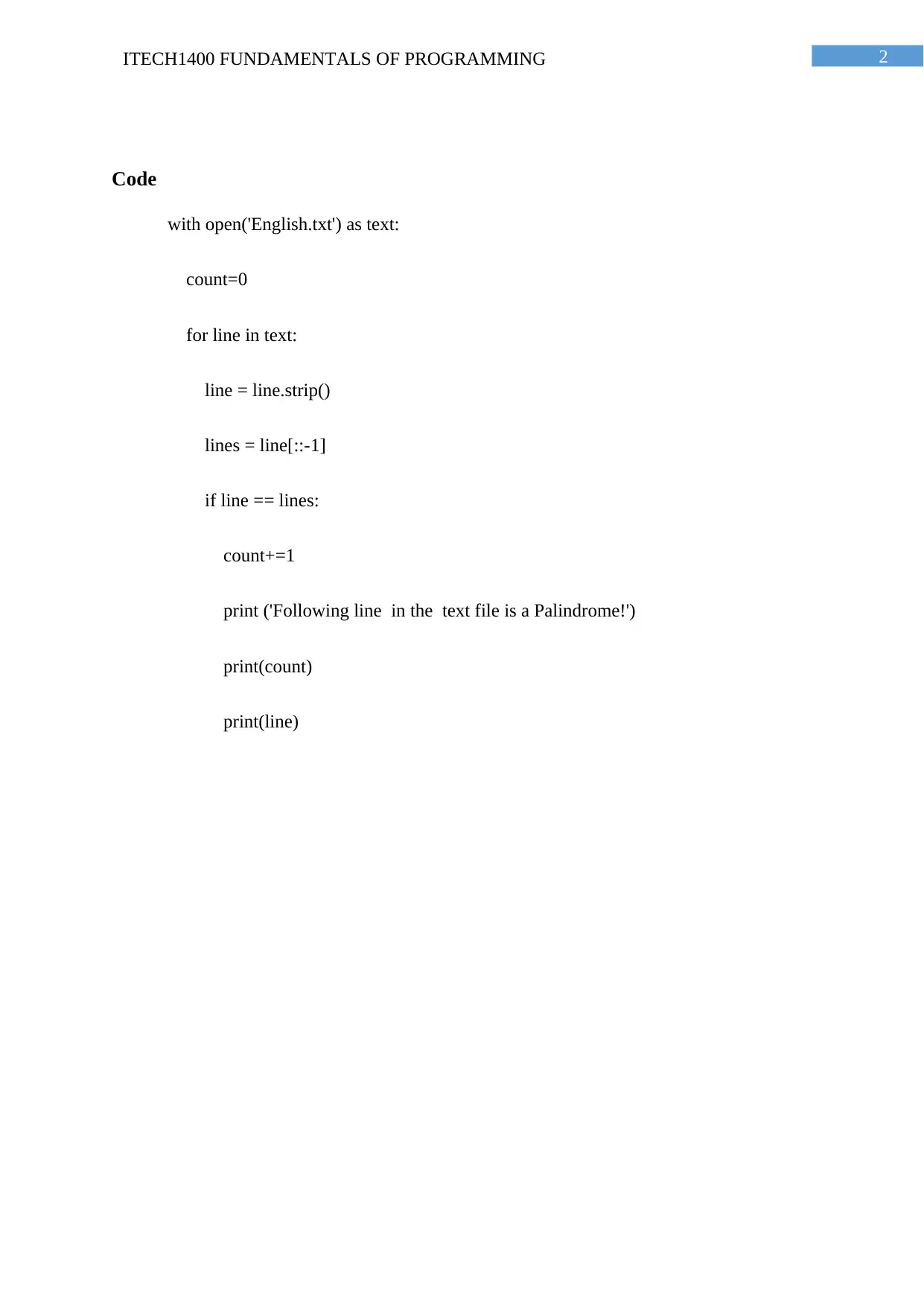

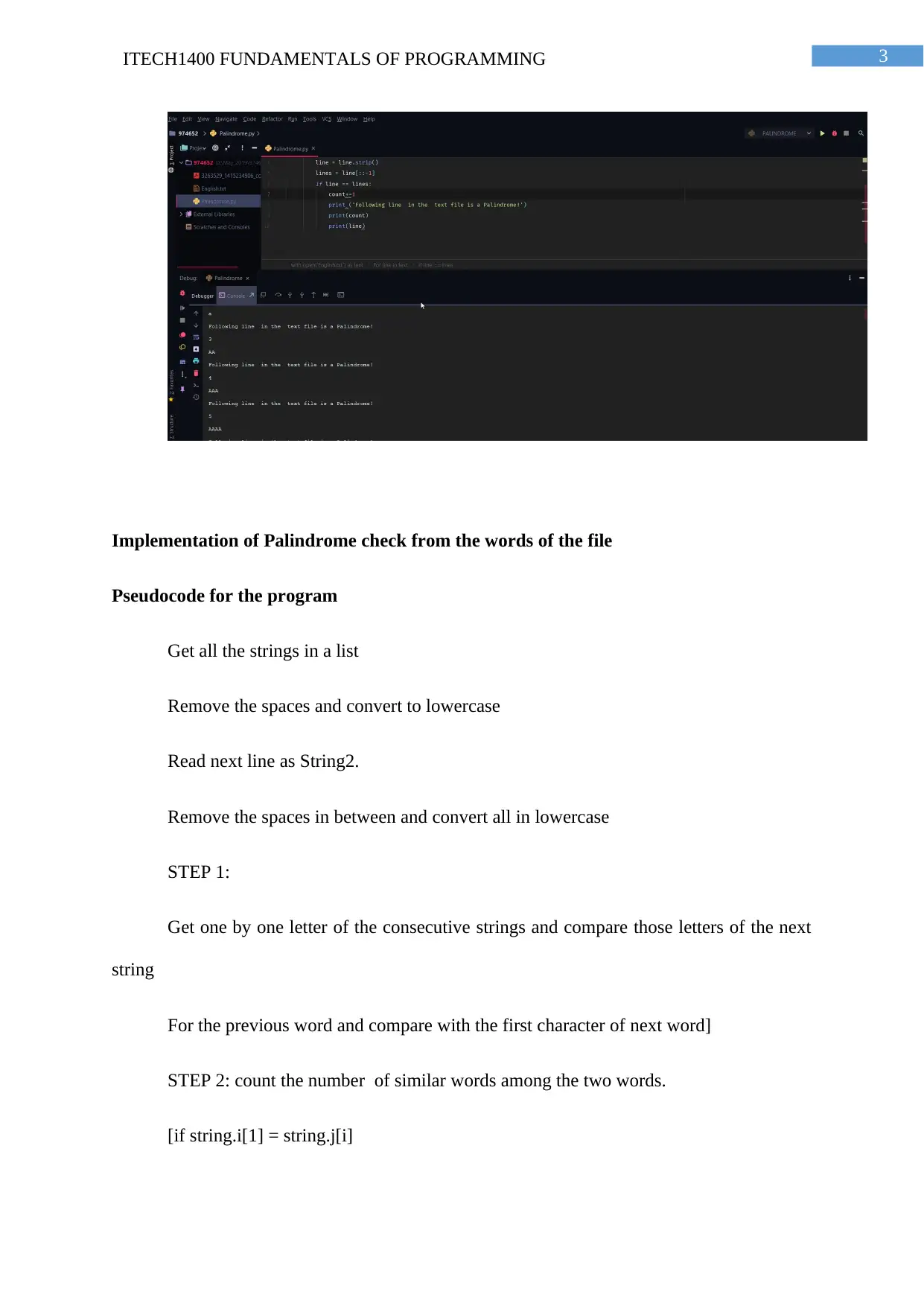
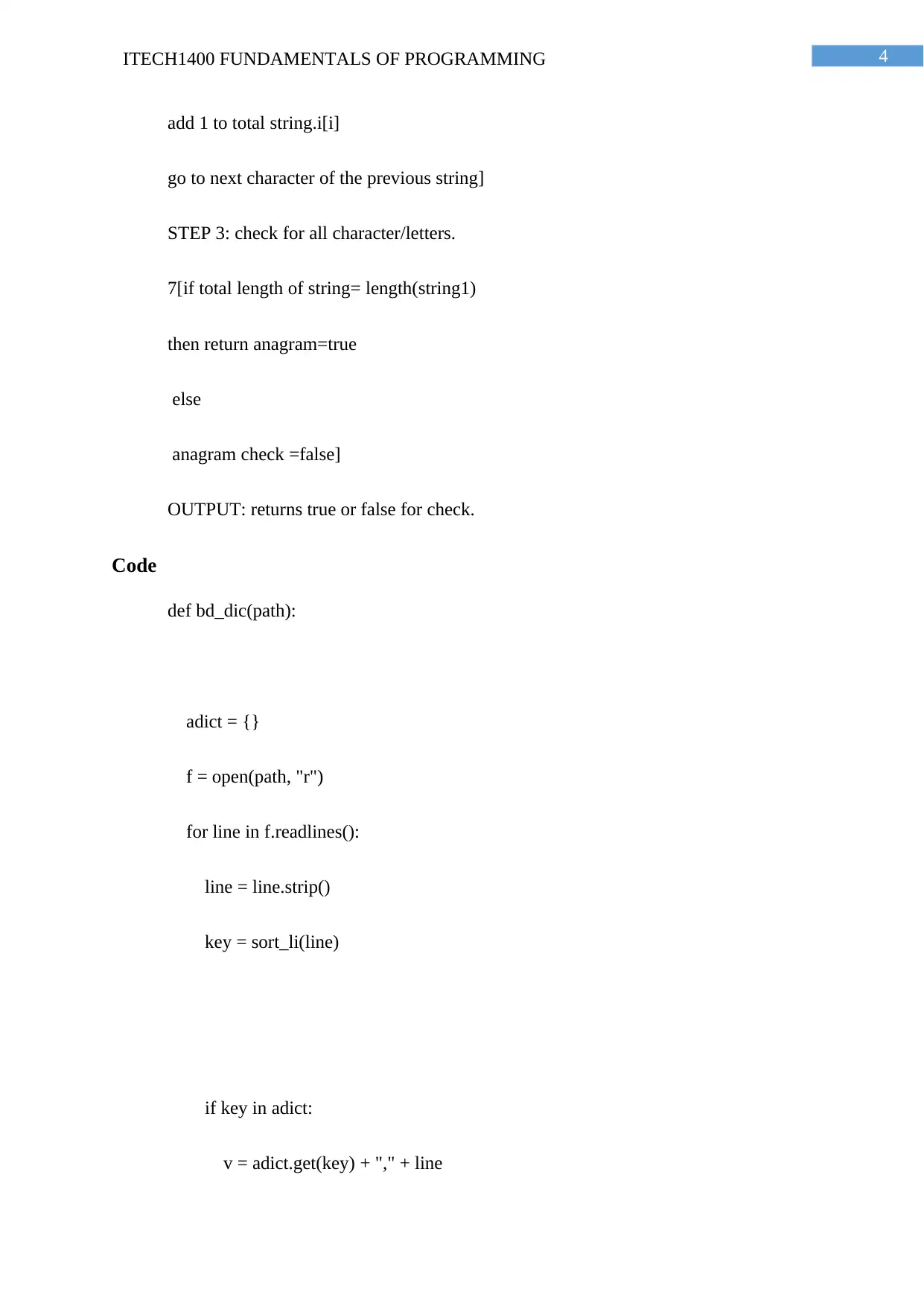
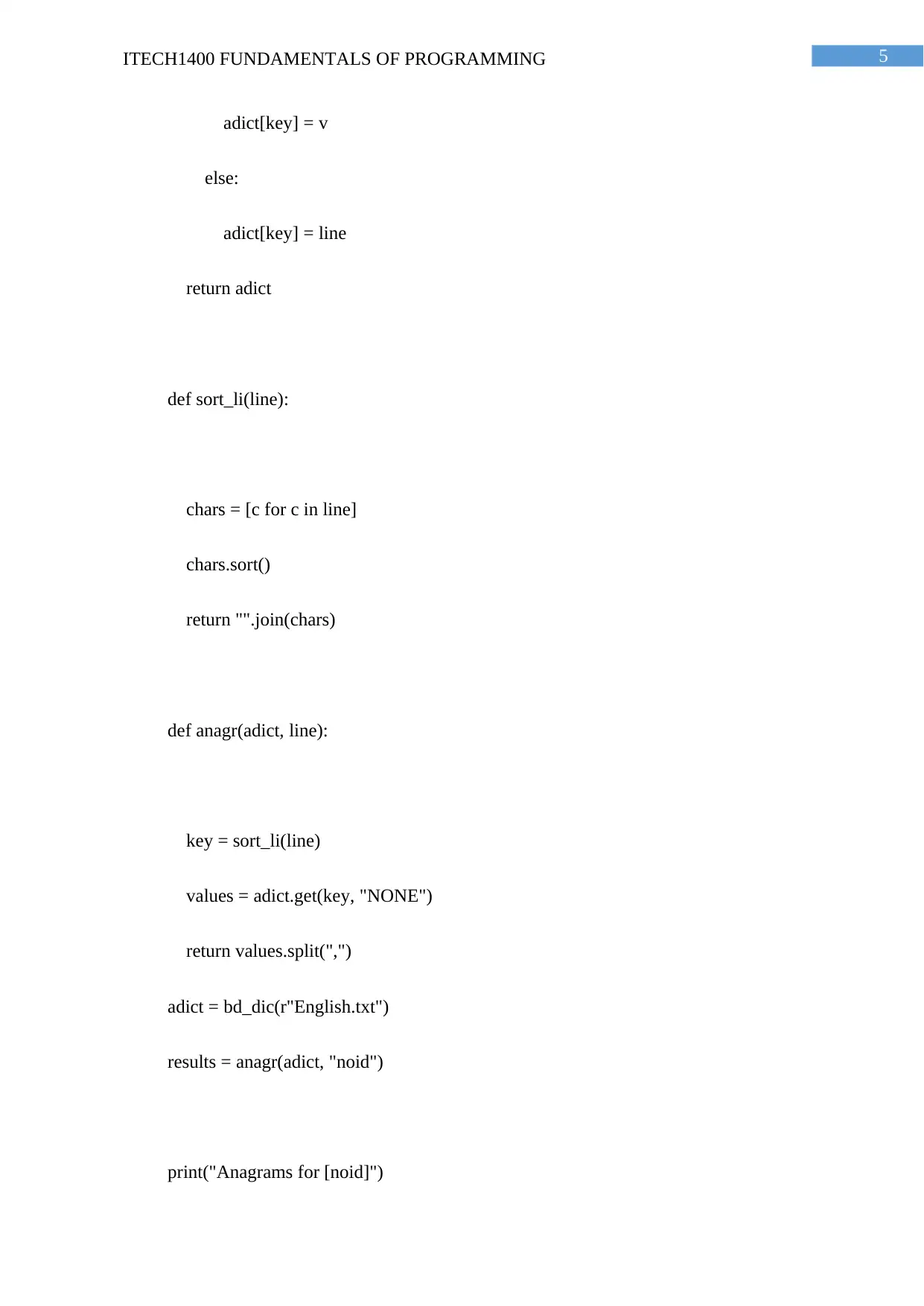
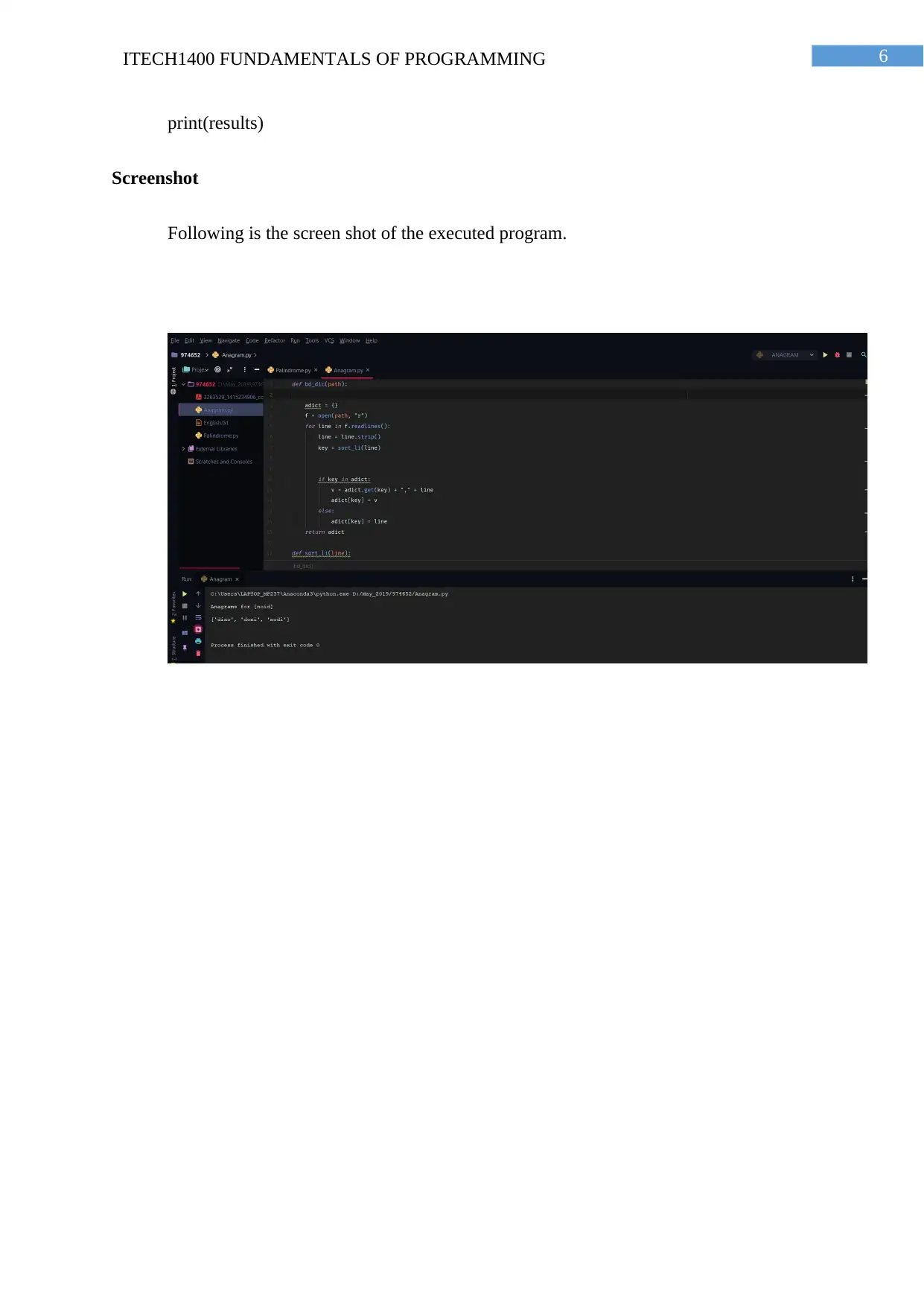
![[object Object]](/_next/static/media/star-bottom.7253800d.svg)